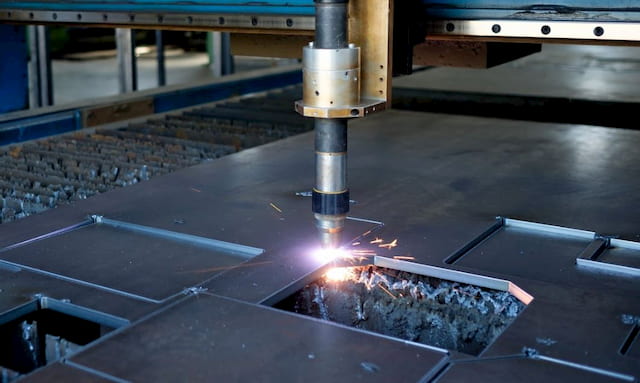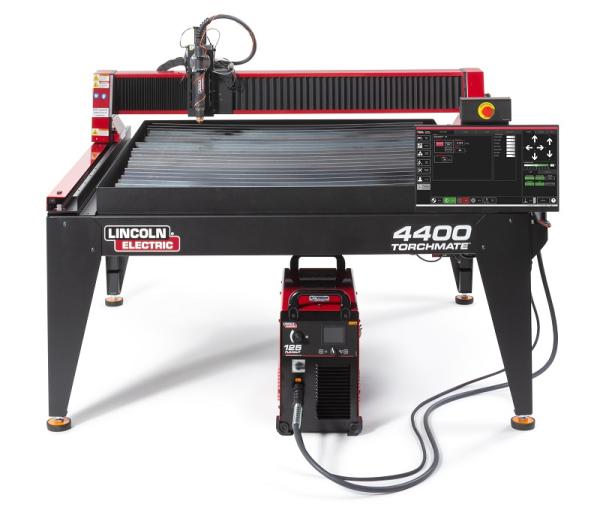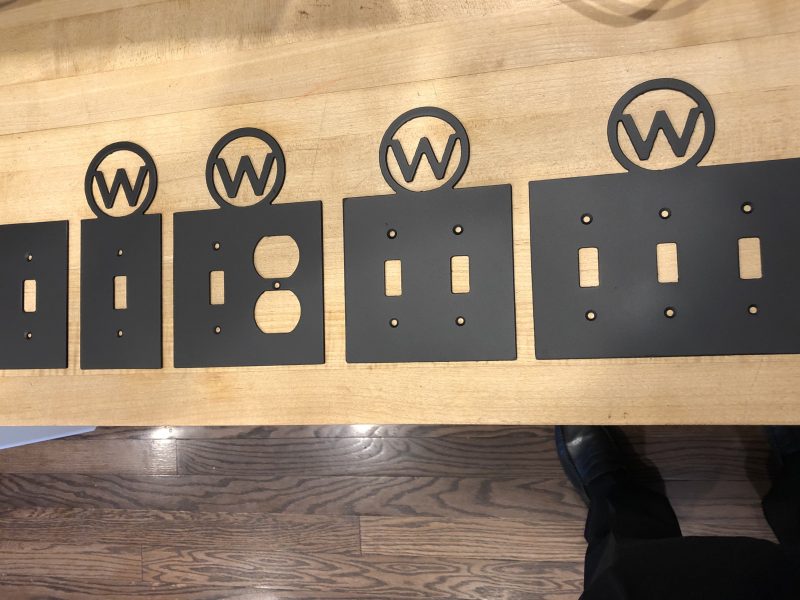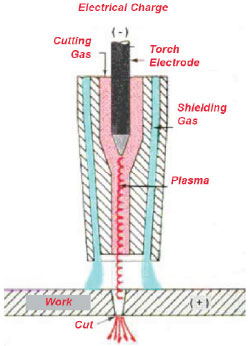Table of Contents
- What Are Some Limitations of a CNC Plasma Cutter?
- Frequently Asked Questions
- What materials can a CNC plasma cutter not cut?
- What factors can affect the precision of a CNC plasma cutter?
- What safety precautions should be taken when using a CNC plasma cutter?
- What maintenance is required for a CNC plasma cutter?
- What are some common mistakes to avoid when using a CNC plasma cutter?
CNC plasma cutters have revolutionized the fabrication industry with their precision and speed. However, as with any technology, there are limitations to what they can do. These limitations can impact the quality of the final product, the cost of production, and the time it takes to complete a project. In this article, we will explore some of the common limitations of CNC plasma cutters and how they can be addressed to ensure the best results.
From material thickness to cutting speed, CNC plasma cutters have certain limitations that can affect the outcome of a project. Some of these limitations include the ability to cut intricate shapes, the quality of the edge finish, and the accuracy of the cut. It is important to understand these limitations and how they can be overcome to achieve the desired result. Let’s dive deeper into each of these limitations and explore ways to address them.
While a CNC plasma cutter is a powerful tool for cutting metal quickly and accurately, there are some limitations to keep in mind. One limitation is the thickness of the material that can be cut. Typically, plasma cutters are most effective on materials that are 1 inch thick or less. Another limitation is the type of material that can be cut. While plasma cutters can cut through a wide range of metals, they may not be effective on materials like wood or plastic. Finally, plasma cutters can generate a lot of heat, which may cause warping or distortion in the material being cut.
What Are Some Limitations of a CNC Plasma Cutter?
When it comes to precision cutting, CNC plasma cutters have become a go-to solution for many industries. They are fast, efficient, and can cut through almost any material. However, like any technology, they have their limitations. In this article, we will explore some of the limitations of a CNC plasma cutter.
1. Material Thickness Limitations
CNC plasma cutters are ideal for cutting through thin and medium-thick metal sheets. However, they have limitations when it comes to thicker materials. Generally, CNC plasma cutters can cut through metal sheets up to 2 inches thick. Anything thicker than that is difficult to cut with a CNC plasma cutter.
The reason for this limitation is that the plasma arc loses energy as it travels through the material. The thicker the material, the more energy is lost, making it difficult to cut through.
2. Edge Quality Limitations
CNC plasma cutters are known for their speed and efficiency, but they are not known for producing high-quality edges. The edges produced by a CNC plasma cutter are rough and may require additional processing to smooth them out.
This limitation is due to the nature of the plasma cutting process. The plasma arc melts the material as it cuts, producing a rough edge. While some CNC plasma cutters are equipped with features to reduce the roughness of the edge, they are not as effective as other cutting methods.
3. Material Type Limitations
CNC plasma cutters are designed to cut through metal sheets, but they are not suitable for cutting through all types of metal. For example, they are not ideal for cutting through stainless steel or aluminum.
The reason for this limitation is that stainless steel and aluminum have a higher melting point than other metals. The plasma arc is not hot enough to melt these materials, making it difficult to cut through them.
4. Environmental Limitations
CNC plasma cutters require a clean, dry and stable environment to operate effectively. They are sensitive to changes in temperature and humidity, which can affect the quality of the cut.
In addition, CNC plasma cutters produce a lot of noise and fumes during operation, which can be a problem in certain environments. It is important to have proper ventilation and safety measures in place when using a CNC plasma cutter.
5. Cost Limitations
CNC plasma cutters are a significant investment for any business. They can cost anywhere from a few thousand dollars to tens of thousands of dollars, depending on the size and capabilities of the machine.
In addition, there are ongoing costs associated with operating a CNC plasma cutter, including maintenance, electricity, and consumables such as gas and electrodes. These costs can add up quickly, making it difficult for some businesses to justify the expense of a CNC plasma cutter.
6. Speed Limitations
While CNC plasma cutters are fast, they are not as fast as other cutting methods such as laser cutting. The speed of a CNC plasma cutter is limited by the thickness and type of material being cut.
In addition, CNC plasma cutters require a preheating process before they can start cutting, which can add to the overall cutting time. This limitation may not be a problem for some businesses, but it may be a concern for those that require high-speed cutting.
7. Design Limitations
CNC plasma cutters are designed to cut through flat sheets of material. They are not ideal for cutting complex shapes or curves.
While some CNC plasma cutters are equipped with features to allow for more complex cutting, they are not as versatile as other cutting methods such as waterjet cutting.
8. Maintenance Limitations
CNC plasma cutters require regular maintenance to operate effectively. This includes cleaning the machine, replacing worn parts, and ensuring that the machine is properly calibrated.
While maintenance is important for any machine, it can be time-consuming and costly for CNC plasma cutters. Businesses that do not have the resources to maintain their CNC plasma cutter may find themselves facing downtime and reduced productivity.
9. Operator Limitations
CNC plasma cutters require skilled operators to operate effectively. The operator must be able to read and interpret technical drawings, program the machine, and troubleshoot any issues that arise.
In addition, the operator must be able to handle the physical demands of operating a CNC plasma cutter, including lifting heavy materials and standing for long periods of time.
10. Software Limitations
CNC plasma cutters rely on software to operate. The software controls the machine’s movements and ensures that the cutting is accurate.
However, the software has limitations when it comes to complex cutting. While some software programs are equipped with features to allow for more complex cutting, they may not be as effective as other cutting methods.
In conclusion, while CNC plasma cutters are a valuable tool for many industries, they do have their limitations. Businesses that are considering investing in a CNC plasma cutter should carefully consider these limitations to ensure that they are making the right choice for their needs.
Frequently Asked Questions
Here are some frequently asked questions about the limitations of a CNC plasma cutter:
What materials can a CNC plasma cutter not cut?
While CNC plasma cutters are incredibly versatile machines, they do have some limitations when it comes to the materials they can cut. For example, plasma cutters cannot cut materials that are highly reflective, such as copper or brass. Additionally, they may struggle to cut materials that are thicker than their maximum cutting capacity, which varies depending on the specific machine. In some cases, a plasma cutter may also struggle to make precise cuts in materials that are warped or otherwise irregular.
It’s important to keep these limitations in mind when deciding whether a plasma cutter is the right tool for your project. If you need to cut materials that a plasma cutter isn’t capable of handling, you may need to explore other cutting methods or consider outsourcing the job to a professional fabricator.
What factors can affect the precision of a CNC plasma cutter?
While CNC plasma cutters are capable of making very precise cuts, there are several factors that can affect the accuracy of the machine. For example, if the cutting torch is not properly aligned with the material being cut, the resulting cuts may be slightly off. Similarly, if the material being cut is not perfectly flat or if it moves during the cutting process, this can also affect the precision of the cuts.
Other factors that can impact the precision of a plasma cutter include the quality of the cutting consumables (such as the nozzle and electrode), the age and condition of the machine, and the skill level of the operator. To ensure that your plasma cutter is producing accurate cuts, it’s important to regularly maintain and calibrate the machine, use high-quality consumables, and train your operators to use the machine properly.
What safety precautions should be taken when using a CNC plasma cutter?
As with any industrial machine, CNC plasma cutters can be dangerous if not used properly. One of the most important safety precautions to take when using a plasma cutter is to wear appropriate personal protective equipment, such as gloves, safety glasses, and hearing protection. Additionally, you should always ensure that the work area is well-ventilated to avoid inhaling toxic fumes produced during the cutting process.
Other safety precautions to take when using a plasma cutter include properly grounding the machine, keeping the work area clean and free of clutter, and never leaving the machine unattended while it’s in operation. By following these guidelines and taking other appropriate safety measures, you can help reduce the risk of accidents and injuries when using a plasma cutter.
What maintenance is required for a CNC plasma cutter?
To ensure that your CNC plasma cutter continues to function properly and produce accurate cuts, it’s important to perform regular maintenance on the machine. This may include tasks such as cleaning the cutting torch, replacing worn-out consumables, checking the machine’s alignment, and lubricating moving parts as needed.
You should also regularly inspect the machine for signs of wear or damage, such as cracks in the machine frame or loose belts or chains. By catching these issues early and addressing them promptly, you can help prolong the life of your plasma cutter and reduce the risk of breakdowns or other issues that could impact your production schedule.
What are some common mistakes to avoid when using a CNC plasma cutter?
While CNC plasma cutters are relatively easy to use, there are some common mistakes that can impact the quality of the cuts or even damage the machine. For example, one common mistake is failing to properly ground the machine, which can cause electrical problems or even pose a safety hazard.
Other mistakes to avoid include using incorrect cutting parameters (such as using a cutting speed that’s too high or a current that’s too low), failing to properly clean or maintain the machine, and attempting to cut materials that are outside the machine’s cutting capacity. By taking the time to properly set up the machine and follow best practices for operation and maintenance, you can help ensure that your CNC plasma cutter produces high-quality cuts with minimal issues or downtime.
In conclusion, while CNC plasma cutters are incredibly useful tools for cutting metal, they do have some limitations that users should be aware of. The first limitation is the thickness of the material that can be cut. While CNC plasma cutters are effective at cutting thin to moderately thick materials, they may not be suitable for cutting extremely thick materials.
Another limitation of CNC plasma cutters is their precision. While these machines are generally very accurate, they are not as precise as other types of cutting machines, such as lasers. This means that users may need to spend more time on post-processing to achieve the desired level of precision.
Finally, CNC plasma cutters may require more maintenance than other types of cutting machines. These machines rely on a complex system of components, including the plasma torch, power supply, and CNC controller, all of which must be properly maintained and calibrated to ensure optimal performance. As a result, users may need to invest more time and resources in maintenance and repairs.
Overall, while CNC plasma cutters are incredibly versatile and useful tools, they do have some limitations that users should be aware of. By understanding these limitations and working within their capabilities, users can achieve high-quality, precise cuts with their CNC plasma cutters.
Request a quote today!
[contact-form-7 id="1578" title="Contact form"]
Please compress the file into a ZIP or RAR file before uploading. Alternatively, send through your RFQ by email.
enquires@unitymanufacture.com





